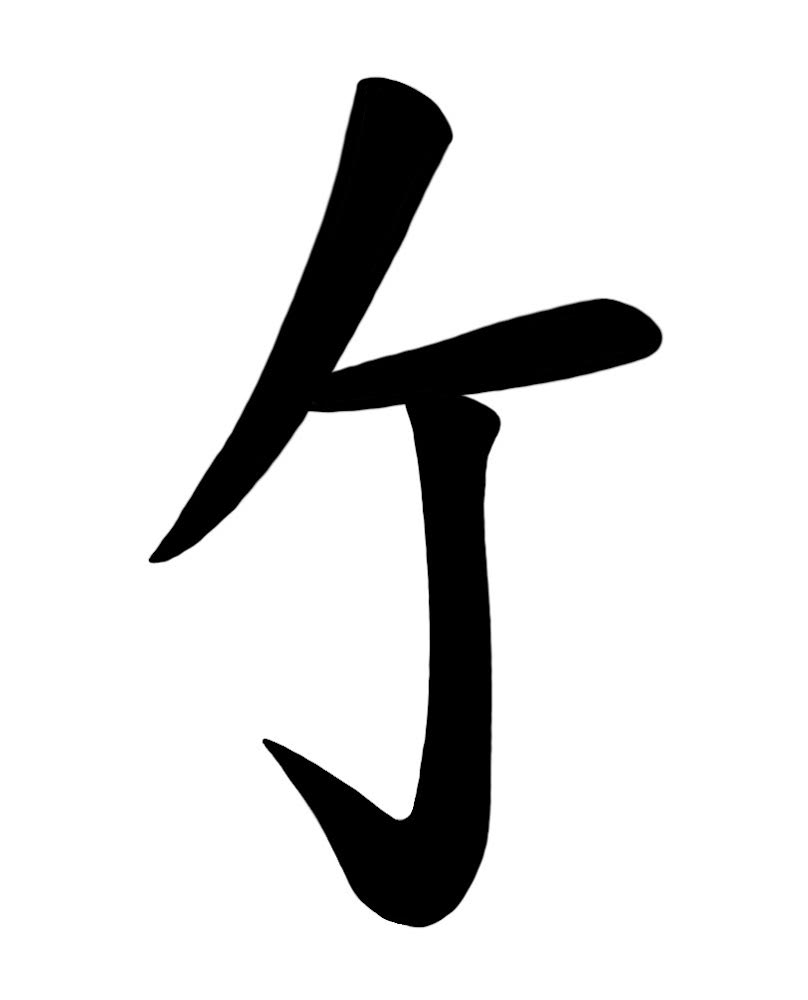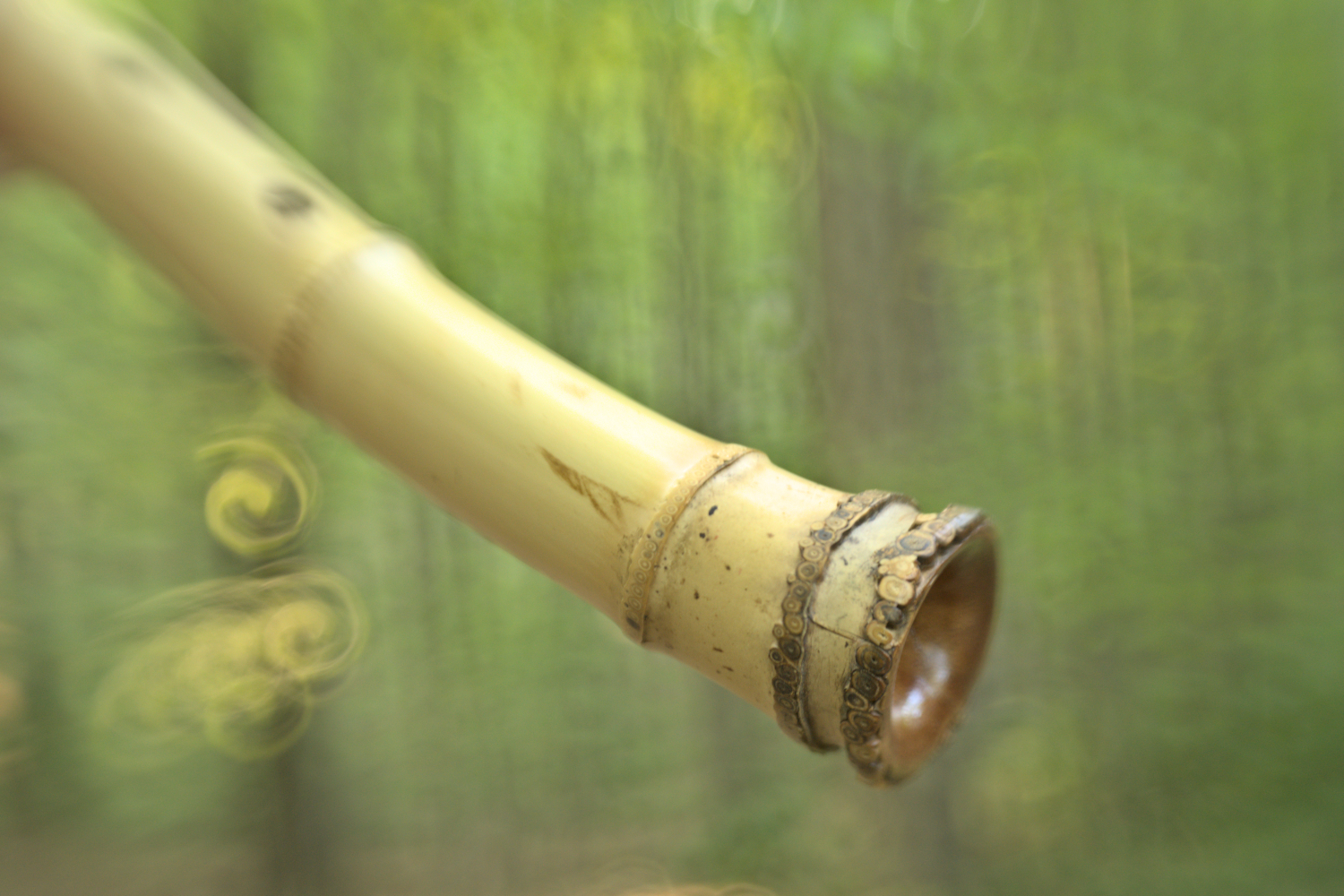Japanese Shakuhachi Terms: A Glossary
This glossary defines key terms related to the shakuhachi. While different schools or styles may have varying interpretations, I have focused on the most common or historically accurate definitions. Where appropriate, less common interpretations are included for deeper understanding. Please note that, as with any translation, some terms do not have a direct or perfect English equivalent.
A – H
- Atari (当たり): A technique to articulate or repeat a note on the shakuhachi by quickly tapping a finger hole. This is used in place of tonguing for traditional shakuhachi playing. Some argue that Osu , to “shove” or “push” best describes the articulations of closed holes (“cuts”), while Atari better describes the striking of open holes (“taps”). (See also Osu.)
- Chokan (長管): Literally “long tube,” referring to shakuhachi generally longer than 2.2 or 2.4 shaku (in excess of 70-75 cm). These are typically Jinashi or Jimori shakuhachi.
- Chu Meri (中メリ): “Half meri,” usually achieved by only partially covering a finger hole without lowering the head significantly.
- Dai Kan (大甲): The third register of the shakuhachi. This is distinct from a musical 3rd octave and should not be confused with Kan (the second register). Dai Kan was not used, nor was the term recognized, in Koten or Edo period Honkyoku, which only utilized Otsu and Kan.
- Dai Meri (大メリ): “Big meri.” This refers to the deepest or lowest amount of pitch flattening used for traditional music. Sometimes translated as O’meri or “great meri.”
- Fuke Shu (普化宗): A pseudo-Buddhist sect formed by and for Komoso and then Komuso (“shakuhachi monks”).
- Hocchiku (法竹): A 20th-century Jinashi-style shakuhachi, often significantly longer or wider than the shakuhachi used by the Komuso monks. This style was created and popularized by Watazumi Doso Roshi (1910-1992).
- Honkyoku (本曲): Literally “original music.” This term can refer to a single piece or to the genre as a whole. It is the most venerated type of shakuhachi music, considered spiritual and meditative, having been composed by the Komuso monks during the Edo period. Many distinct regional styles of Honkyoku developed across Japan.
- Kan (甲): The second, higher register of the shakuhachi, not to be confused with the second octave. Kan is the highest register used in Koten or Edo period Honkyoku; Dai Kan was neither used nor mentioned during that era.
- Komoso (薦僧 / 虚無僧): Predecessors to the Komuso. Mentions of these shakuhachi-playing “beggar monks” or “straw mat monks” (薦僧 / 虚無僧) appear in 15th-century literature. Their name derived from the straw mats they carried for shelter or sleep. Komoso played shakuhachi for alms and were mostly laypersons of commoner birth.
- Komuso (虚無僧): In the latter half of the 16th century, an increasing number of samurai became ronin (masterless). Many of these ronin joined the ranks of the shakuhachi-playing Komoso. Eventually, these samurai came to be known as Komuso, meaning “clear-sky-mind-unformed monks” (虚無僧). As a result, the earlier Komoso laypersons largely faded from historical records.
I – U
- Insempo (陰旋法): Literally “dark scale,” also known as the “Koto scale” or Miyako bushi. This scale is said to have originated among common folk before being adopted by the upper class. Specifically from sex workers of the time who would sing songs to attract patrons.
- Ji (地): Referring to a “paste/plaster” material. Traditionally, it was made by mixing urushi lacquer and jinoko (stone powder). Today, ‘ji’ can refer to anything that adheres to bamboo, such as glue. (Not to be confused with lacquer, which is a protective coating painted onto the inner bore, typically brown, black, or red.)
- Jiari (地有り) / Jinuri (地塗り): “Paste applied” or “pasted.” These terms describe shakuhachi with fully pasted or plastered, human-shaped bores. They often incorporate lacquer, joints, and inlays.
- Jinashi (地無し): “No paste.” Refers to shakuhachi with natural or mostly natural bores. (The term jinashikan – 地無し管 – specifically means “no-paste tube”).
- Jimori (地盛り): “Portion of paste.” By strict definition, this describes shakuhachi where small amounts of paste are added for tuning, transforming a Jinashi into a Jimori.
- Kari (カリ): The act of raising the head or pitch, typically when coming up from a meri note. This should not be confused with the regular, neutral head position.
- Madaké (真竹): A species of bamboo (Phyllostachys bambusoides), commonly known as “Japanese timber bamboo.” Though originally from China, it has become synonymous with Japan and is the only bamboo type traditionally used for the shakuhachi.
- Meri (メリ): The technique of flattening the pitch by bringing the lips closer to the blowing edge and or by shading finger-holes.
- Osu (押す: To “push” or “shove”; this term is used to describe finger articulations. This is used in place of tonguing for traditional shakuhachi playing. Some feel that Osu best describes the articulations of closed holes (“cuts”) while Atari describes striking open holes best (“taps”).
- Otsu (乙): The first register of the shakuhachi, not to be confused with the first octave.
- Shakuhachi (尺八): An umbrella term for all lengths of the Japanese bamboo flute. However, literally, “shakuhachi” refers specifically to a 1.8 shaku length.
- Také Hori (竹掘り): To dig up and harvest bamboo (for shakuhachi).
- Tamenaoshi (矯め直し) / Tameru (矯める): The process of straightening or heat-bending bamboo during the crafting process.
- Utaguchi (歌口): Literally “song opening.” This term refers to the sharp blowing edge of the shakuhachi, where air is directed to produce sound.

